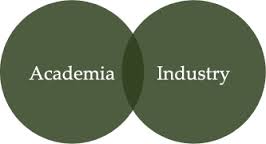Academic Ranking of World Universities
 The Academic Ranking of World Universities (ARWU), also known as the Shanghai Ranking, is a publication that was originated and compiled by the Shanghai Jiao Tong University to rank universities globally. This ranking has been conducted since 2003. It is conducted annually on well-thought and strategic parameters. The results are published by the Shanghai Ranking Consultancy. This is one of its kind ranking.
The Academic Ranking of World Universities (ARWU), also known as the Shanghai Ranking, is a publication that was originated and compiled by the Shanghai Jiao Tong University to rank universities globally. This ranking has been conducted since 2003. It is conducted annually on well-thought and strategic parameters. The results are published by the Shanghai Ranking Consultancy. This is one of its kind ranking.
The Chinese Government backed this ranking to provide a global benchmark against the various universities in China – this they did to assess their progress. The aim of the ARWU is for Chinese universities to do some hardcore and path breaking research in the area of science. The efforts taken by the Chinese Government in the area of higher education is praiseworthy.
The Academic Ranking of World Universities is considered one of the three most influential and widely observed international university rankings, in addition to the QS World University Rankings published by British Quacquarelli Symonds using the pre-existing methodology and innovative cooperation between Times Higher Education and Thomson Reuters.
While we look at strengths, weaknesses cannot be hidden either. The ARWU is criticized for its heavy focus on the natural science more than the social sciences or humanities and its explicit focus on research more than the quality of instruction.
The ranking consists of the following parameters:
International outlook: People, research (7.5%)
 This category looks at diversity of students on campus and to what degree academics collaborate with international colleagues on research projects – both of these elements show how global an institution is in its outlook. The ability of a university to attract undergraduates and postgraduates from all over the world is the key to its success. The top universities also compete for the best faculty from around the globe. So in this category the aspect of international faculties is also given importance. The other indicator in this category is of the proportion of a university’s total research journal publications that have international co-authors. This parameter clearly shows importance of global approach that needs to be adopted by an institution.
This category looks at diversity of students on campus and to what degree academics collaborate with international colleagues on research projects – both of these elements show how global an institution is in its outlook. The ability of a university to attract undergraduates and postgraduates from all over the world is the key to its success. The top universities also compete for the best faculty from around the globe. So in this category the aspect of international faculties is also given importance. The other indicator in this category is of the proportion of a university’s total research journal publications that have international co-authors. This parameter clearly shows importance of global approach that needs to be adopted by an institution.
Research: Volume, income, reputation (30%)
 This category is made up of three indicators. The most prominent one is looking at a university’s reputation for research excellence among its peers. This category also looks at university research income, scaled against staff numbers and normalized for purchasing-power parity.
This category is made up of three indicators. The most prominent one is looking at a university’s reputation for research excellence among its peers. This category also looks at university research income, scaled against staff numbers and normalized for purchasing-power parity.
This is a contentious indicator because it can be influenced by national policy and economic wellbeing in a country. But, this indicator looks at the will of a University to spend money on research to increase its capability and thus considers that this is valid measure. Data is gathered to take account each university’s distinct subject profiles, reflecting the fact that research grants in science subjects are often bigger than those awarded for the social sciences, arts and humanities research. The research environment category also includes a simple measure of research productivity – research output scaled against staff numbers. The number of papers published in the academic journals indexed by Thomson Reuters is given lot of credibility. This gives an idea of an institution’s ability to get papers published in quality peer-reviewed journals.
Citations: Research influence (30%)
 A citation is a reference to a published or unpublished source. More precisely, a citation is an abbreviated alphanumeric expression fixed in the body of an intellectual work that denotes an entry in the bibliographic references section of the work for the purpose of acknowledging the relevance of the works of others to the topic of discussion. This parameter attracts 30 percent of overall score. It looks at the role of universities in spreading new knowledge and ideas.
A citation is a reference to a published or unpublished source. More precisely, a citation is an abbreviated alphanumeric expression fixed in the body of an intellectual work that denotes an entry in the bibliographic references section of the work for the purpose of acknowledging the relevance of the works of others to the topic of discussion. This parameter attracts 30 percent of overall score. It looks at the role of universities in spreading new knowledge and ideas.
It examines research weight by capturing the number of times a university’s published work is cited by scholars globally. In 2014, Thomson Reuters examined more than 50 million citations to 6 million journal articles, published over five years. The data are drawn from the 12,000 academic journals indexed by Thomson Reuters’ Web of Science database and include all indexed journals published between 2007 and 2011. The citations help to show how much each university is contributing to the sum of human knowledge. It shows whose research has stood out, has been picked up and built on by other scholars and, most importantly, it has been shared around the global scholarly community to push further the boundaries of our collective understanding, irrespective of discipline. The ranking excludes any institution that publishes fewer than 200 papers a year to ensure that it has enough data to make statistically valid comparisons.
Citation helps referencing – it’s a way to give credit to the writers from whom scholars borrow words and ideas. By citing the work of a particular scholar students can acknowledge and respect the intellectual property rights of that researcher. A student/academician can draw on any of the millions of ideas, insights and arguments published by other writers, many of whom have spent years researching and writing. All that is needed is to acknowledge their contribution in newer building assignments.
Industry income: Innovation (2.5%)
 A university/institute must essentially help industry with innovations, inventions and consultancy; it is its core mission. This category seeks to capture such “knowledge transfer” by looking at how much research income an institution earns from industry; it is scaled against the number of academic staff it employs. Industry income earned by innovation suggests the extent to which businesses are willing to pay for research and a university’s ability to attract funding in the competitive commercial marketplace.
A university/institute must essentially help industry with innovations, inventions and consultancy; it is its core mission. This category seeks to capture such “knowledge transfer” by looking at how much research income an institution earns from industry; it is scaled against the number of academic staff it employs. Industry income earned by innovation suggests the extent to which businesses are willing to pay for research and a university’s ability to attract funding in the competitive commercial marketplace.
It is a practical indicator of institutional quality. The Universities need to align education and research to meet the rising needs of industry and main concerns of the nation. The industry-academia interface must go to review the curriculum and pedagogy to ensure that they are pertinent and contemporary for the industry.
Teaching: The learning environment (30%)
 This category employs five separate performance indicators designed to provide a clear sense of the teaching-learning process environment of each institution from both the student and the academic perspective. The teaching and learning category looks at staff-to-student ratio.
This category employs five separate performance indicators designed to provide a clear sense of the teaching-learning process environment of each institution from both the student and the academic perspective. The teaching and learning category looks at staff-to-student ratio.
Where there is a healthy ratio of students to staff, the former will get the personal attention they require from the institution’s faculty. The teaching category also examines the ratio of doctoral to bachelor’s degrees awarded by each institution. It determines that institutions with a high density of research students are more knowledge-intensive and that the presence of an active postgraduate community is a marker of a research-led teaching environment valued by undergraduates and postgraduates. The doctorate-to-bachelor’s ratio is taken into consideration. The teaching category also uses data on the number of doctorates awarded by an institution, scaled against its size as measured by the number of academic staff it employs, as well as giving a sense of how committed an institution is to nurturing the next generation of academics, a high proportion of postgraduate research students also indicates the provision of teaching at the highest level that is thus attractive to graduates and effective at developing them.
Undergraduates also tend to value working in a rich environment that includes postgraduates. This indicator is normalized to take account of a university’s unique subject mix, reflecting the different volume of doctoral awards in different disciplines. The final indicator in the category is a simple measure of institutional income scaled against academic staff numbers.
This figure is adjusted for purchasing-power parity so that all nations may compete on a level playing field indicating the general status of an institution that gives a broad picture of the infrastructure and facilities available to students and staff.
 Indian Universities/Institutions need to adhere to the global standards. The rankings parameters are usually based on tough standards. Only, Punjab University appears in the World University Rankings in the top 400 universities list for 2013-14. Although India has 42 central universities, 285 state universities, 130 deemed universities and 125 private universities, barely 3 or 4 of them are appreciated worldwide. Like Chinese Government backed Academic Ranking of World Universities to provide a global benchmarking for their universities for improving the educational standards, when will India raise its status?
Indian Universities/Institutions need to adhere to the global standards. The rankings parameters are usually based on tough standards. Only, Punjab University appears in the World University Rankings in the top 400 universities list for 2013-14. Although India has 42 central universities, 285 state universities, 130 deemed universities and 125 private universities, barely 3 or 4 of them are appreciated worldwide. Like Chinese Government backed Academic Ranking of World Universities to provide a global benchmarking for their universities for improving the educational standards, when will India raise its status?
According to a Times of India report based on QS BRICS 2014 University Rankings published on Tuesday, 29th July 2014, India is the only country among BRICS nations (Brazil, Russia, India, China and South Africa) that couldn’t find a place in its top 10 list. Barring Russia, all other nations in the group are developing countries and newly industrialized States. A low ranking for Indian universities among these five nations brings down status of India in the world. India needs to immediately streamline its educational policies to showcase its strengths in research and development. However tough the parameters of ranking might be, we need a strong policy framework in place to augment our educational levels. Let’s stop underestimating the importance of quality education.













































